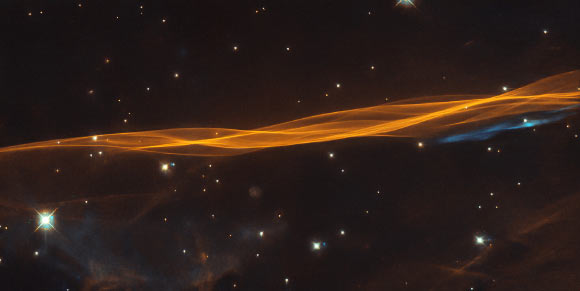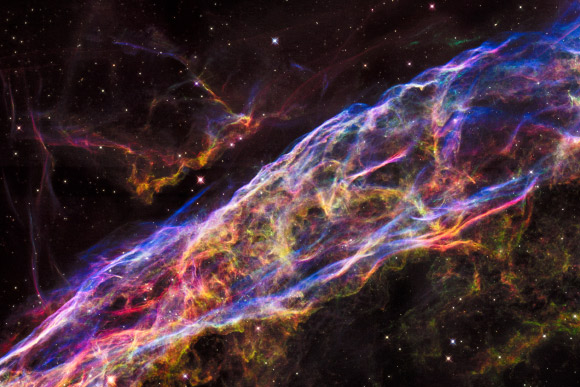A new image from the NASA/ESA Hubble Space Telescope shows a tiny portion of a nebula called the Cygnus Loop.

This Hubble image shows a small portion of the Cygnus Loop, a donut-shaped nebula located 2,400 light-years away in the constellation of Cygnus. Image credit: NASA / ESA / Hubble / W. Blair / Leo Shatz.
The Cygnus Loop is a large donut-shaped nebula located approximately 2,400 light-years away from Earth.
Also designated as W78 and Sharpless 103, it is actually an expanding blast wave from a supernova explosion that occurred about 15,000 years ago.
Its name comes from its position in the northern constellation of Cygnus, where it covers an area 36 times larger than the full Moon.
The visual portion of the supernova remnant is known as the Veil Nebula, also called the Cirrus Nebula or the Filamentary Nebula.

This Hubble image shows a small section of the Veil Nebula. This section of the outer shell of the famous supernova remnant is in a region known as the Witch’s Broom Nebula (NGC 6960). Image credit: NASA / ESA / Hubble Heritage Team.
“The original Cygnus supernova explosion blasted apart a dying star about 20 times more massive than our Sun between 10,000 and 20,000 years ago,” Hubble astronomers said.
“Since then, the remnant has expanded 60 light-years from its center.”
“The shockwave marks the outer edge of the supernova remnant and continues to expand at around 350 km per second (217.5 miles per second).”
“The interaction of the ejected material and the low-density interstellar material swept up by the shockwave forms the distinctive veil-like structure seen in this image.”







